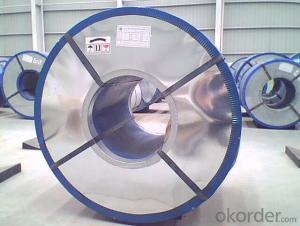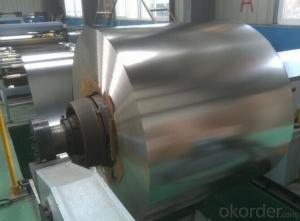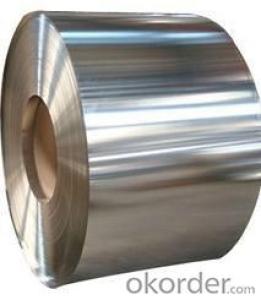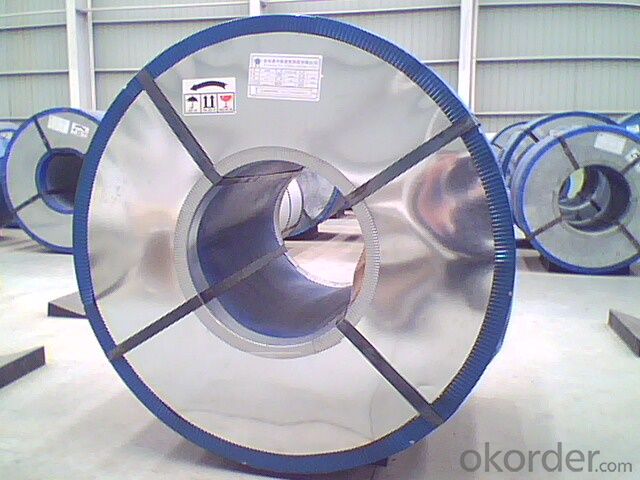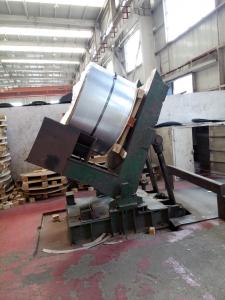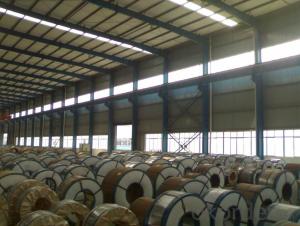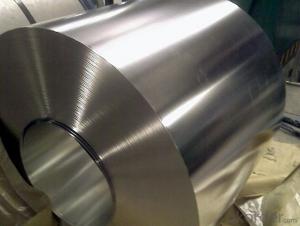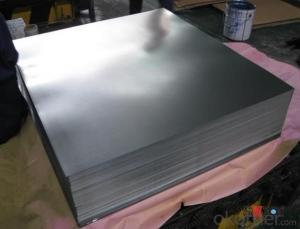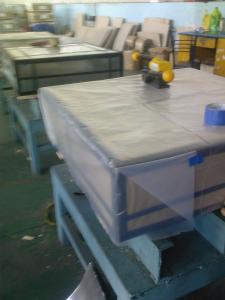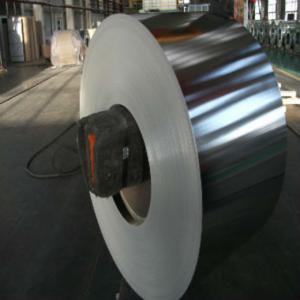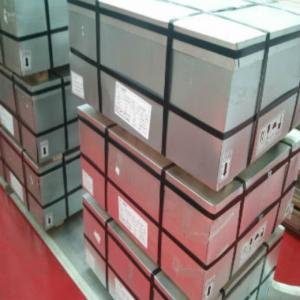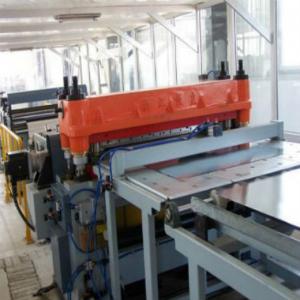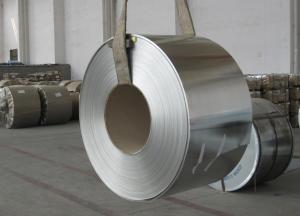Electrolytic Tinplate Coils for Tin Cans Making
- Loading Port:
- Tianjin
- Payment Terms:
- TT OR LC
- Min Order Qty:
- 25 m.t
- Supply Capability:
- 7000 m.t/month
OKorder Service Pledge
OKorder Financial Service
You Might Also Like
1.Structure of Electrolytic Tin Plate Coils and Sheets for Foods Metal Packaging Description
Electrolytic Tin Plate Coils and Sheets for Foods Metal Packaging, is one thin steel sheet with a coating of tin applied by electrolytic deposition. Tinplate made by this process is essentially a sandwich in which the central core is strip steel. This core is cleaned in a pickling solution and then fed through tanks containing electrolyte, where tin is deposited on both sides. As the strip passes between high-frequency electric induction coils, it is heated so that the tin coating melts and flows to form a lustrous coat.
2.Main Features of the Electrolytic Tin Plate Coils and Sheets for Foods Metal Packaging
Appearance – Electrolytic Tin Plate is characterized by its beautiful metallic luster. Products with various kinds of surface roughness are produced by selecting the surface finish of the substrate steel sheet.
Paintability and printability – Electrolytic Tin Plates have excellent paintability and printability. Printing is beautifully finished using various lacquers and inks.
Formability and strength – Electrolytic Tin Plates have got very good formability and strength. By selecting a proper temper grade, appropriate formability is obtained for different applications as well as the required strength after forming.
Corrosion resistance – Tinplate has got good corrosion resistance. By selecting a proper coating weight, appropriate corrosion resistance is obtained against container contents. Coated items should meet 24 hour 5 % salt spray requirement.
Solderability and weldability – Electrolytic Tin Plates can be joined both by soldering or welding. These properties of tinplate are used for making various types of cans.
Hygienic – Tin coating provides good and non toxic barrier properties to protect food products from impurities, bacteria, moisture, light and odours.
Safe – Tinplate being low weight and high strength makes food cans easy to ship and transport.
Eco friendly – Tinplate offers 100 % recyclability.
Tin is not good for low temperature applications since it changes structure and loses adhesion when exposed to temperatures below – 40 deg C.
3.Electrolytic Tin Plate Coils and Sheets for Foods Metal Packaging Images

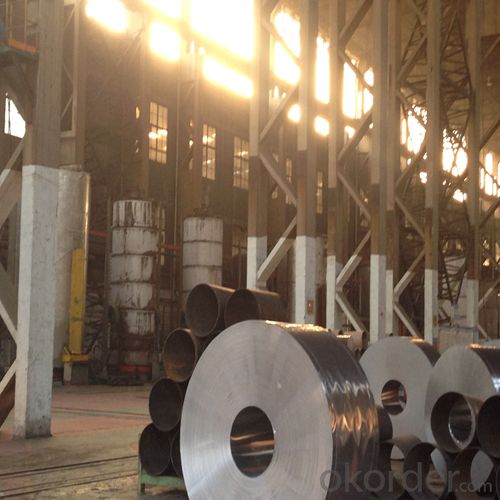
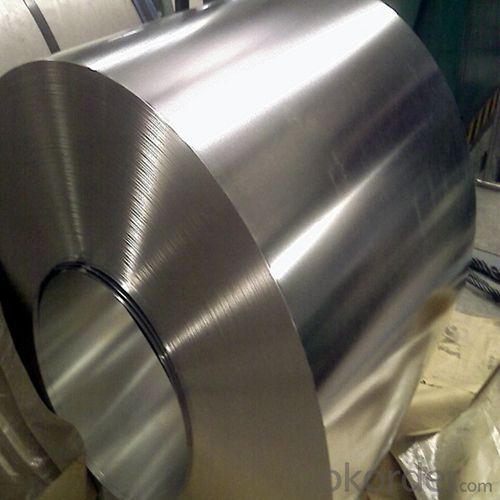
4.Electrolytic Tin Plate Coils and Sheets for Foods Metal Packaging Specification
Standard | ISO 11949 -1995, GB/T2520-2000,JIS G3303,ASTM A623, BS EN 10202
|
Material | MR,SPCC |
Thickness | 0.15mm - 0.50mm |
Width | 600mm -1150mm |
Temper | T1-T5 |
Annealing | BA & CA |
Coil Inner Diameter | 508mm |
Weight | 6-10 tons/coil 1~1.7 tons/sheets bundle |
Passivation | 311 |
Oil | DOS |
Surface | Finish,bright,stone,matte,silver |
5.FAQ of Electrolytic Tin Plate Coils and Sheets for Foods Metal Packaging
-What your tinplate material is used for ?
Tinplate is widely used for the packaging of products. Such as food cans,
beverage cans, pet cans, closures, general line cans and so on.
Printed Tinplate is offered!!
-How to place .an order or contact you ?
Please send us Email. we will give you a quick response in seconds .
- How is your quality ?
All our quality is prime even the secondary quality . We have many years experience
In this field with serious quality control standard . Advanced equipment, We welcome your visit to our factory .
- Q: What are the main properties of tinplate?
- Tinplate is a type of steel coated with a thin layer of tin, which gives it several unique properties. Firstly, tinplate is highly corrosion-resistant, making it ideal for packaging food and beverages. It also has excellent solderability, allowing for easy and secure sealing of cans. Additionally, tinplate has good formability, meaning it can be easily shaped into different containers or components. Lastly, tinplate has a bright and attractive appearance, making it popular for decorative purposes as well.
- Q: Can tinplate be used for packaging perishable goods?
- Yes, tinplate can be used for packaging perishable goods. Tinplate is a material that is resistant to corrosion and can provide a protective barrier against moisture, light, and oxygen, which are factors that can cause spoilage in perishable goods. Additionally, tinplate containers can be sealed tightly to maintain the freshness and quality of the perishable products.
- Q: How does tinplate compare to tin-free steel in terms of properties and applications?
- Tinplate and tin-free steel differ in terms of properties and applications. Tinplate has a thin tin coating on its surface, providing excellent corrosion resistance and a shiny appearance. It is commonly used in food and beverage packaging, as well as for decorative purposes. On the other hand, tin-free steel lacks the tin coating and is typically coated with other materials like chromium or polymer. It offers better paint adhesion and is often used in applications such as automotive parts, electrical appliances, and construction materials. Therefore, the choice between tinplate and tin-free steel depends on the specific requirements and intended applications.
- Q: Can tinplate packaging be used for sports equipment?
- Yes, tinplate packaging can be used for sports equipment. Tinplate is highly durable and can provide excellent protection for various types of sports equipment, such as balls, bats, or even smaller items like goggles or accessories. Additionally, tinplate packaging can be customized and designed in various shapes and sizes to fit the specific requirements of different sports equipment.
- Q: How is tinplate used in the cosmetics industry?
- Tinplate is commonly used in the cosmetics industry for packaging purposes. It is often utilized to make containers such as cans and tubes that store various cosmetic products like creams, lotions, and powders. Tinplate provides durability, protection, and a sleek appearance to these cosmetic packaging materials, ensuring the safety and preservation of the products.
- Q: Can tinplate be recycled?
- Yes, tinplate can be recycled. Tinplate is made from steel coated with a thin layer of tin, and both steel and tin are recyclable materials. Recycling tinplate involves separating the steel and tin layers, melting them down, and then reusing them to make new products. Recycling tinplate helps conserve natural resources and reduces waste.
- Q: How is tinplate coated with anti-tarnish materials?
- Tinplate is coated with anti-tarnish materials through a process called tinplating, where a layer of tin is electroplated onto the surface of the tinplate. This tin layer acts as a protective barrier, preventing the tinplate from coming into direct contact with the atmosphere and preventing tarnish formation. The tinplating process ensures that the tinplate remains corrosion-resistant and maintains its appearance over time.
- Q: Can tinplate be used for outdoor signage?
- Yes, tinplate can be used for outdoor signage. It is a durable material that can withstand various weather conditions, making it suitable for outdoor use.
- Q: How is tinplate made?
- Tinplate is made by coating thin sheets of steel with a layer of tin through a process called electroplating. The steel sheets are first cleaned and then passed through an electrolyte bath where a direct current is applied. This causes tin ions in the electrolyte to bond with the steel, forming a layer of tin on its surface. The resulting tin-coated steel sheets are then rolled into coils, ready to be used in various applications like food cans and packaging materials.
- Q: What are the different surface finishes available for tinplate?
- The different surface finishes available for tinplate include bright, stone, and matt finishes.
Send your message to us
Electrolytic Tinplate Coils for Tin Cans Making
- Loading Port:
- Tianjin
- Payment Terms:
- TT OR LC
- Min Order Qty:
- 25 m.t
- Supply Capability:
- 7000 m.t/month
OKorder Service Pledge
OKorder Financial Service
Similar products
Hot products
Hot Searches
Related keywords
